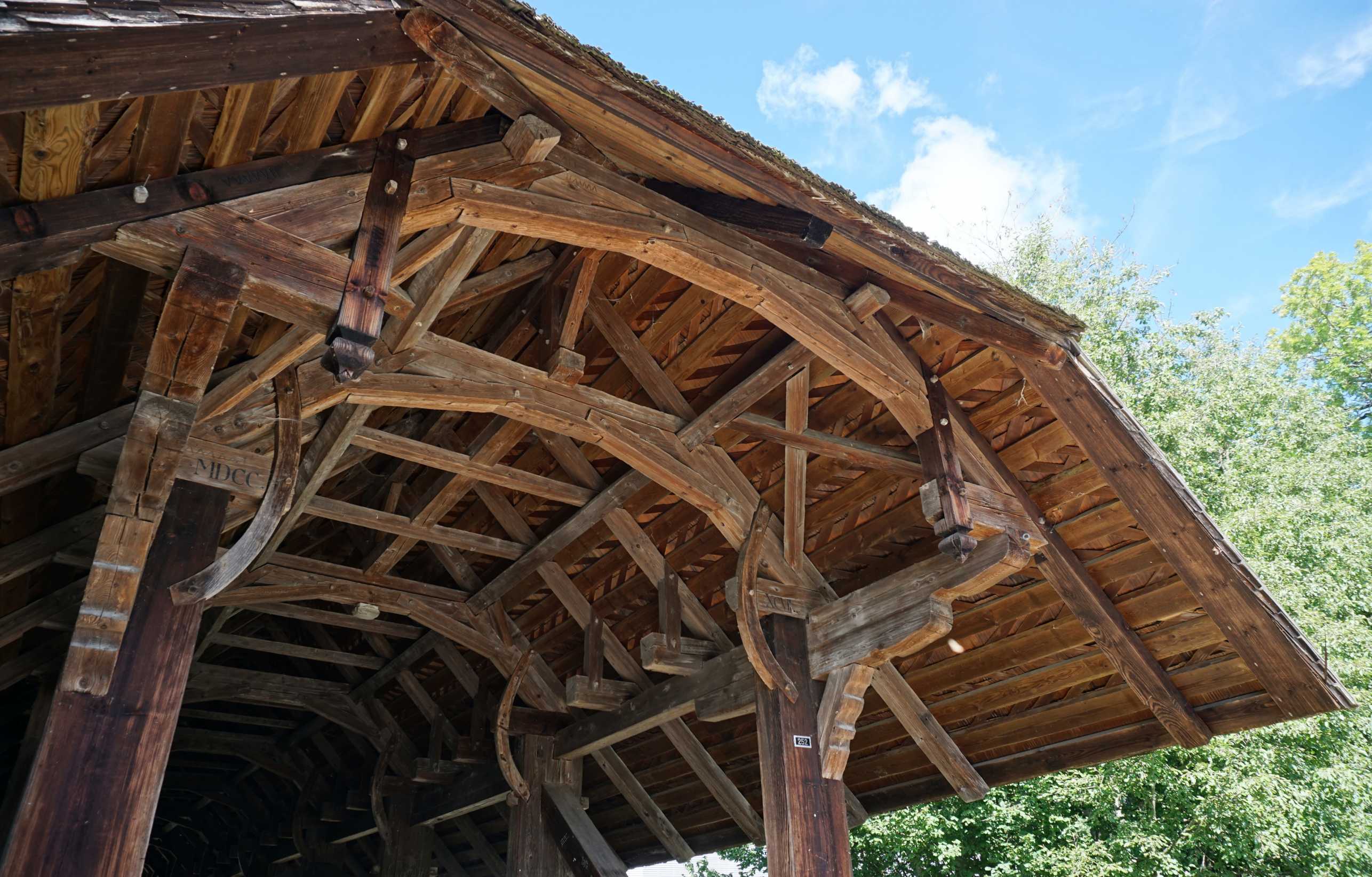L. Hirschfelder: Historic timber bridges of Switzerland as architectural heritage in the context of its building, use and significance history.
Dissertation project by Lea Hirschfelder on "Historic timber bridges of Switzerland as architectural heritage in the context of its building, use and significance history"

In Switzerland, a stock of about 120 historic timber bridges from the period between 1500 and 1880 has been preserved. The construction period of these bridges spans from the pre-industrial, early modern phase of the 16th century through the first modern engineering structures to the era of engineering innovations around 1850. The topography and economic development of the Alpine region, as well as the abundance of building materials, led to a boom in the construction of timber bridges in the early modern period. In this context, Switzerland enjoyed a considerable international reputation as one of the leading countries in the field of timber bridge construction until 1800.
The public and tourist interest in Swiss timber bridges which has been growing for several decades (as evidenced, for example, by the “St. Galler Brückenweg” in the Sitter Valley or the “Holzbrückenweg Emmental”) contrasts with the previous lack of scientific documentation and analysis to date, particularly in terms of building research. Closing this gap is the focus of the external page Swiss National Science Foundation (SNSF)-funded project "Historical timber bridges of the circumalpine region: a comprehensive approach" to which this dissertation project is affiliated.
In addition to the construction history aspects of the SNSF project, the main focus of this dissertation will be, alongside structural documentation and architectural-historical analysis, on their history of use and significance. This includes examining past and present heritage conservation decisions and the underlying values, as well as historical questions regarding route planning and the organization of bridge construction. The Swiss timber bridge tradition will also be considered in a broader European context by analyzing its reception in written and visual sources. These include not only scientific and popular literature, from architectural treatises to travel guides, but also 19th-century landscape depictions and 20th-century postcards.
- Forthcoming 03/2025: "Kopfüberstehende Schriftzüge und schräge Fundamente. Neue Untersuchungen zur Objektgeschichte der Holzbaracke in der Gedenkstätte Buchenwald", in: Reflexionen. Annual Magazine of the Buchenwald and Mittelbau-Dora Memorials Foundation, Buchenwald 2025.
- 09/2024: Presentation on the wooden barrack at the Buchenwald Memorial at the conference "Vom Typenblatt zum Lager. Die FOKORAD und ihr bauliches Erbe in Niesky", Niesky 2024.
Contact
Bauforschung u.Konstruktionsgesch.
Wolfgang-Pauli-Str. 27
8093
Zürich
Switzerland